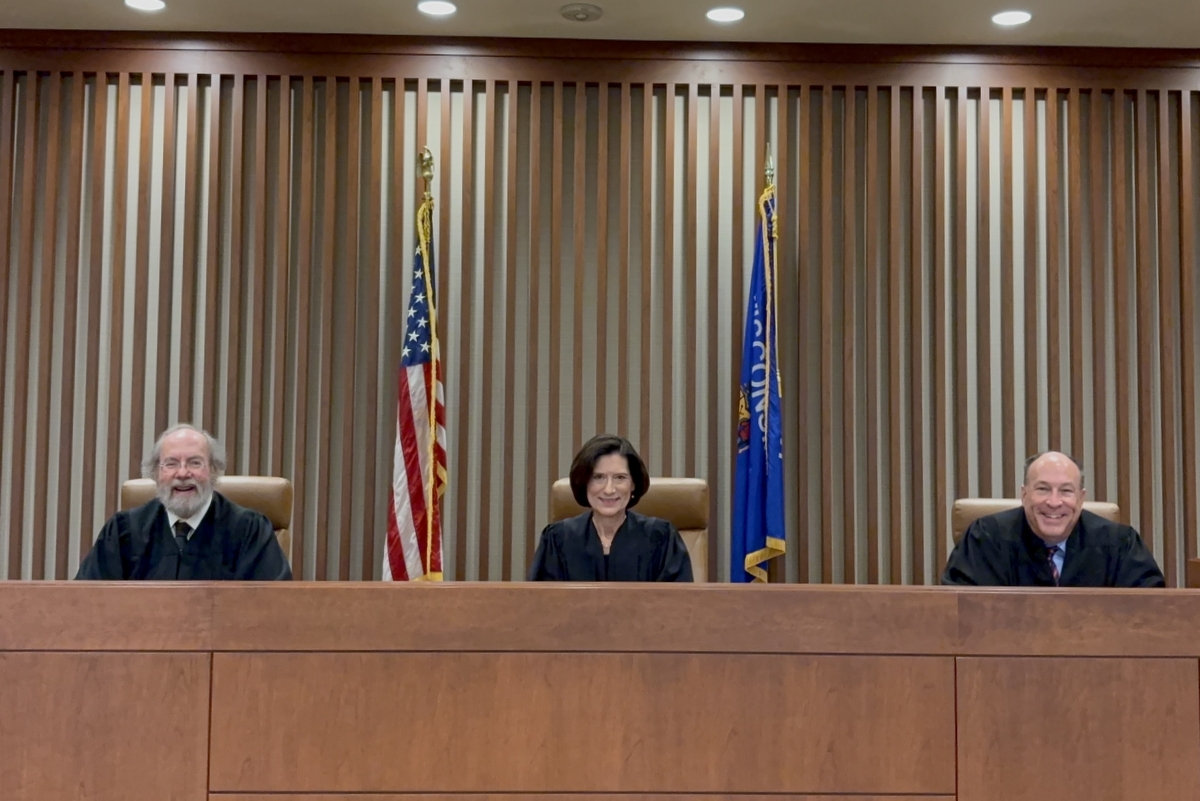The Association of American Law Schools (AALS), through its Pro Bono & Access to Justice Section, will soon release its fourth annual Pro Bono Honor Roll. This national recognition celebrates law students, staff, and faculty for their outstanding contributions to pro bono legal services.
This year, Marquette University Law School is proud to recognize Karli Ring, a second-year law student, Mindy Schroeder, program assistant to the Marquette Volunteer Legal Clinics (MVLC), and Bruce Boyden, associate professor of law. A word of two about their pro bono efforts will help illustrate the broader efforts of the Marquette Law School community.
Karli Ring, a second-year law student, is a reliable presence at the MVLC, often stepping in at the last minute when other students have been unable to cover a shift. This fall, she committed to a standing weekly shift at the United Community Center, where she helps lead operations. Karli takes on a wide range of responsibilities—setting up clinic space, prescreening clients, identifying legal issues, matching clients with volunteer teams, and making referrals as needed. A U.S. Army veteran (she served as a paratrooper), Karli brings discipline and a deep commitment to public service. She is inclined toward litigation after law school. In the meantime, she remains an essential member of the MVLC team.
Mindy Schroeder is at the heart of the United Community Center branch of the MVLC, one of the busiest clinic sites. Each week, this two-hour clinic serves dozens of clients, nearly half of whom are monolingual Spanish-speakers, and offers help with immigration matters as well as family and civil issues. Mindy oversees the entire operation—coordinating volunteers, managing client flow, and ensuring that every person who walks through the door feels welcome and supported. Her bilingual skills allow her to connect directly with Spanish-speaking clients, while her care for both clients and volunteers creates a positive, professional, and highly efficient environment. Thanks to Mindy’s steady leadership and top-notch style, this fast-paced clinic runs smoothly and remains a trusted resource for the community.
Bruce Boyden has championed the pro bono involvement of both lawyers and law students through his work on the Eastern District of Wisconsin Bar Association’s Pro Bono Committee. As part of this effort, law students assist the committee by reviewing Section 1983 cases, filed by incarcerated individuals, that the court has designated as cases that would especially benefit from the assistance of an attorney. Students review pleadings and discovery and then draft memos summarizing the cases. This work helps committee members evaluate cases as they seek to secure pro bono representation for each such plaintiff.
We extend our sincere congratulations and gratitude to Karli Ring, Mindy Schroeder, and Professor Boyden, along with all members of the Marquette community who seek to “Be The Difference” through pro bono efforts.
Read about past awardees here (2022), here (2023), and here (2024).




